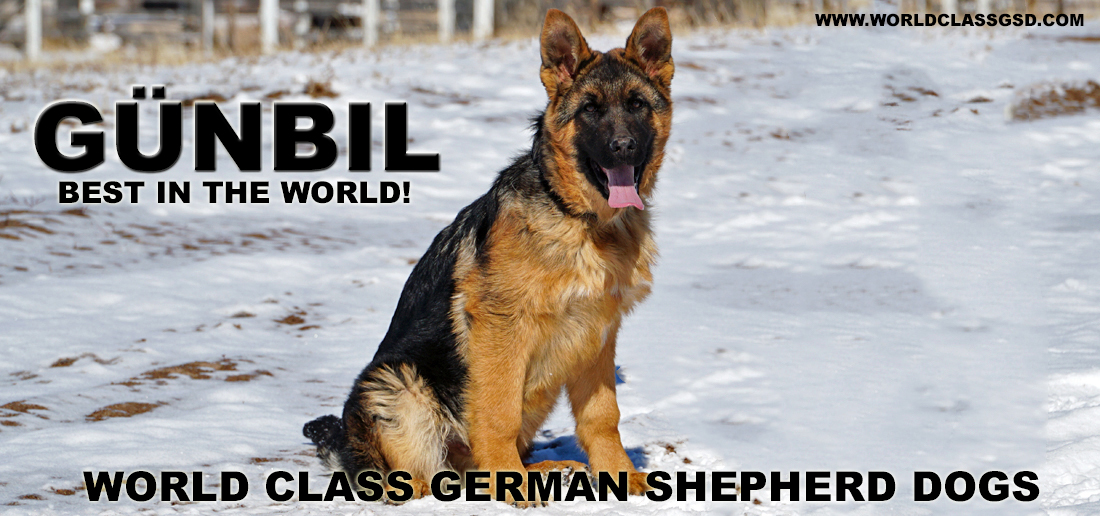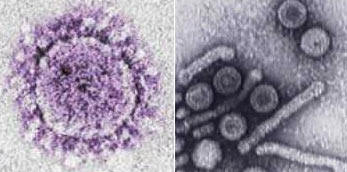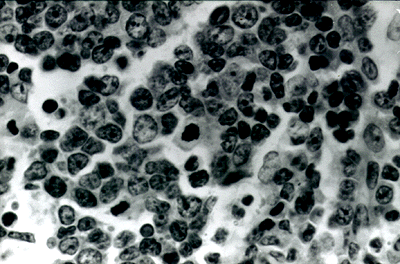
CANINE Parvo Virus
Parvovirus is a HIGHLY CONTAGIOUS virus that attacks the intestines and causes sloughing of the inner layers of the intestine. The most common symptoms of this disease (the “intestinal form”) are vomiting and diarrhea.

Parvovirus is a close relative of feline panleukopenia virus and in fact, may have mutated from the feline form and infected the dog in the late 1970’s. Extremely hardy, the virus survives for long periods outside its host. The virus can live in the environment up to 6 months and survives winter under a blanket of snow where the temperature is usually around 25-28 degrees F. Extremely cold temperatures prior to snow fall may kill the virus. Sodium hypochlorite (bleach) is the only effective disinfecting agent.
The virus is transmitted by oral ingestion of viral-contaminated feces. Upon ingestion by the new host it infects local lymph nodes, quickly multiplies and then moves through the blood to the small intestine. The virus attacks the lining of the intestines, interfering with digestion and absorption of nutrients.
Additionaly, the normal bacterial flora of the small intestine which aid in digestion are now exposed to ulcerated mucosa, providing a direct route into the blood stream. Bacteria and toxins move into the bloodstream, ultimately causing death. The incidence of the disease is highest in young dogs whose immunity is not fully developed. Most dogs are infected between the ages of 2-6 months, when maternal antibody decreases below a protective level in the puppy.
Clinical Signs
In vaccinated adult dogs, an infection with parvovirus is usually controlled by the dog’s own immune system prior to the development of clinical signs. However, in young or unvaccinated dogs, infection will cause frequent vomiting and very fluid diarrhea, often with blood. Symptoms appear 5-6 day following infection.
The Development of the Disease in the Dog
According to the theory that distension is the primary condition, following distension with gas, the stomach rotates in a clockwise or counter-clockwise direction. The dog is usually severely ill, and can die within one or two hours. The stomach is severely distended, the wall of the stomach is congested, and may even be deprived of blood. The spleen is also twisted and enlarged.
A second situation can occur which is not so serious; the condition is more chronic, and may last several days. Some dogs eventually become severely distended, and may die; however, many recover spontaneously.
Diagnosis
Generally, diagnosis is based on the symptoms of the disease and falling white blood cell counts. Good rapid diagnostic tests are also available at veterinary clinics. Additionally, the virus can be found in the feces by commercial labs using electron microscopy.
Treatment

Treatment for the disease is primarily supportive. Aggressive intravenous fluid therapy is given to combat dehydration. Antibiotics are given intravenously to reduce secondary bacterial infection. Food is withheld until vomiting has ceased. Many veterinarians employ antiemetics to calm the stomach and aid in the control of dehydration. Blood transfusions have been employed to increase the level of globulins, red blood cells and serum protein which are lost through diarrhea.
Most recently, anti-toxins and anti-parvo serum have been used. Early detection and aggressive therapy are the key to survival in parvoviral infections. Parvovirus is best prevented by vaccination.
Modified live vaccines are effective and safe. Immunity is stimulated with a set of four vaccines, starting at 8 weeks of age and repeating every 3-4 weeks until the puppy is sixteen weeks old. Some investigators have suggested extending the protocol until 20-26 weeks because of the persistence of maternal antibody in the puppy which neutralizes the vaccine. Annual revaccination is highly recommended.
Prevention/Control
Prevention/Control of parvovirus by sanitation measures alone is extremely difficult because the virus is such a resistant, hardy organism and because it is so easily spread. Contact with other dogs,and especially their stool, should be minimized. Clorox diluted one part to 30 parts water (4 oz Clorox in 1 gallon of water) has been effective in disinfecting inanimate objects such as clothing, floors, kennels, etc. However, it is impractical, if not impossible, to disinfect public streets, parks, etc. Isolation of infected dogs is another method of control, moderately effective.
Both of these measures will help reduce the amount of contagious virus in the environment, but only a full series of vaccinations, with appropriate booster intervals, will help to control the source of infection, the contagious shedding dog.
- All About German Shepherd Puppies
- Pet Disease and Allergies
- Hips and Elbows
- German Shepherd Dog Anatomy
- What is Schutzhund
- German Shepherd Behavior
- Quick Tips On German Shepherds
- Our Show Dogs










